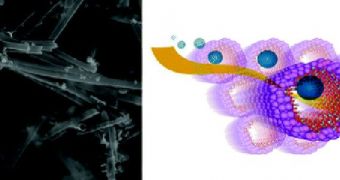Lithium-ion batteries are, at this point, among the most popular variety of electricity-storing equipments in the world, and can be found in a wide array of applications, from mobile phones to laptops and other gadgets. However, they still hold only small amounts of electricity when compared to their size, experts say. They argue that newer generations, endowed with electrodes made out of silicon nanotubes, could potentially hold ten times as much as existing lithium-ion batteries, in a package the same size.
Details of the new electrodes are published in the latest online issue of ACS' journal, Nano Letters. Behind the research were experts from an international scientific effort, featuring researchers at Stanford University, in the United States, and the Hanyang University in Ansan, South Korea. The team argues that the electrodes could potentially allow for a more feasible electric-vehicle industry, making it possible for such cars to run for longer distances between charges. At this point, short battery lifespans are the main inconvenience that needs to be overpassed in this field of research.
Experts from the South Korea-based lithium-ion-battery producer LG Chem also collaborated in the investigation. The company produces energy-storage devices for a number of applications, and it is also one of the main battery suppliers for the new Chevy Volt. The team reports that its new electrode is the anode of a future battery. Generally, when such a device is charged, lithium ions move from the cathode to the anode. The new anodes are more efficient than their graphite-based counterparts simply because they can store more ions.
“In a hybrid car, the battery lasts only 30 minutes using the current technology,” Hanyang University Associate Professor of Applied Chemistry Jaephil Cho, who has also been the leader of the new research, explains. He argues that the new anode now has to benefit from the assistance of a similarly efficient cathode, in order for the technology to really move forward. Such a battery, the expert adds, could power up an electric vehicle for as much as four hours, which would translate into an 800-percent increase from current levels.

 14 DAY TRIAL //
14 DAY TRIAL //